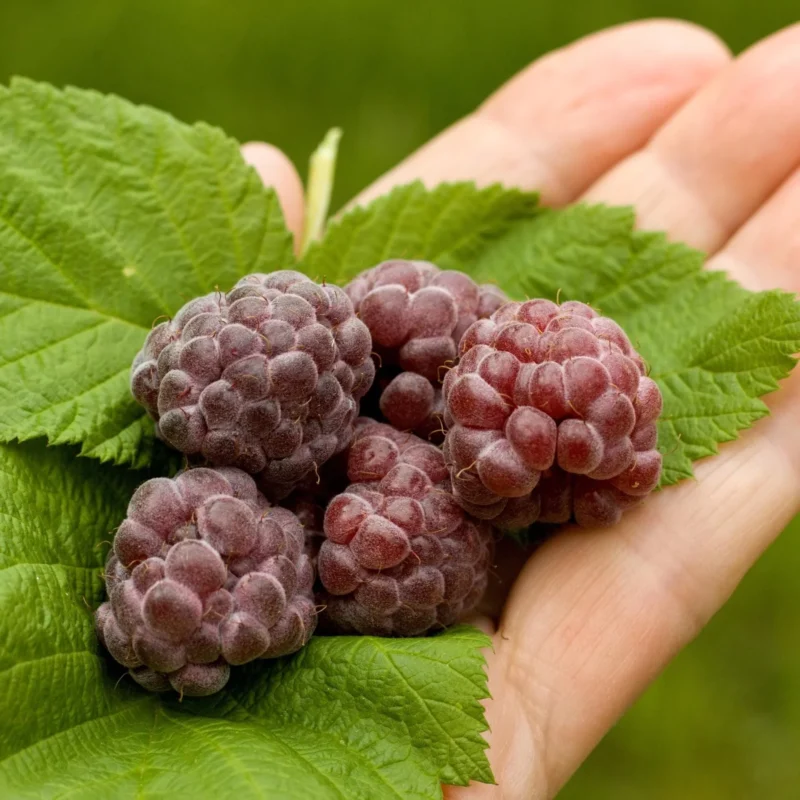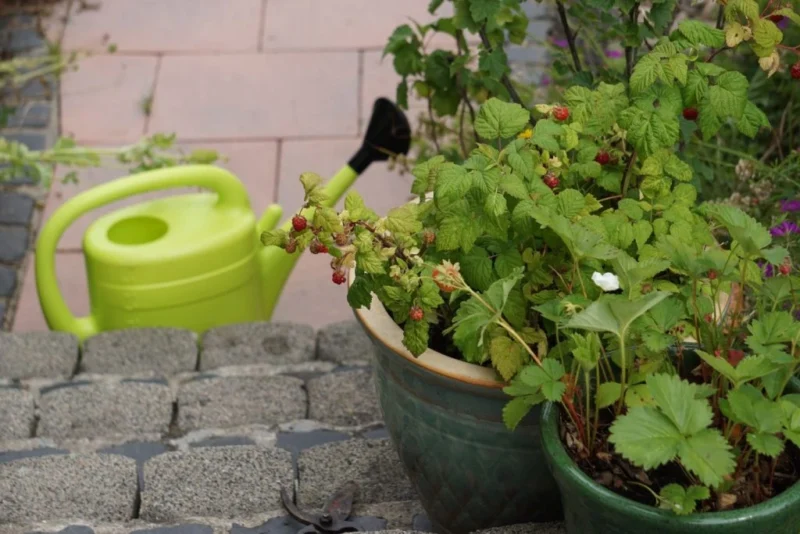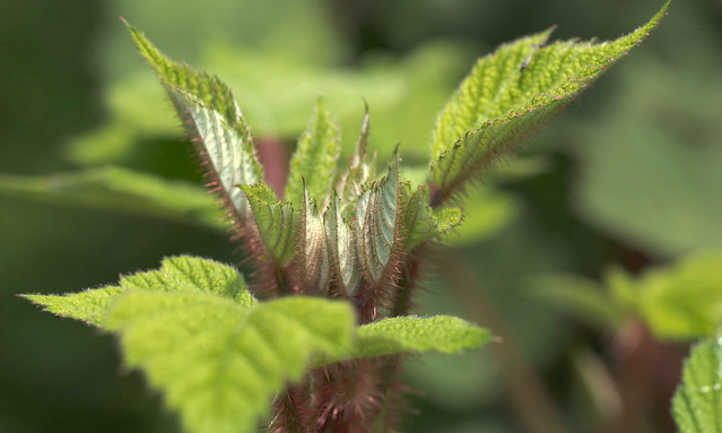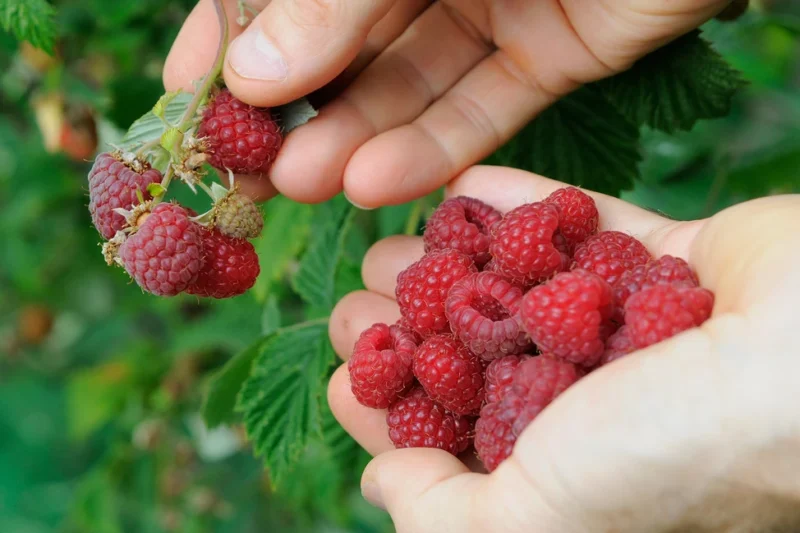Glencoe raspberry in containers is an excellent choice for container gardens, offering vibrant springtime blooms and a bounty of fresh berries throughout the summer. Perfect for small spaces, container gardening allows you to enjoy raspberries even if you’re short on room, plan to move (take your plants with you!), or want to save water.
However, successfully growing raspberries in pots requires thoughtful preparation. They need specific soil conditions, and not all raspberry varieties are suitable for container cultivation. Additionally, sunlight placement is critical for healthy growth, making the location of your container just as important as the care you provide.
With the right variety, a sufficiently large container, proper sunlight, and the ideal soil, your raspberry plants can flourish. Glencoe raspberries, in particular, are well-suited for this setup. Need guidance to get started? This comprehensive guide will walk you through everything you need to know about growing raspberries in pots. Our guide tells you how to do it the right way!

Why Choose to Grow Glencoe Raspberry in Containers
With its unique shrubby growth habit and minimal pruning requirements, it is easy to care for and perfect for small spaces like balconies, patios, or compact gardens. The striking dark purple fruit, although small, adds visual appeal and offers a bold, intense flavor that is ideal for making jams, pies, or pairing with yogurt.
Glencoe is the only variety of its kind grown domestically, though similar varieties, such as ‘Royalty,’ are cultivated internationally. This exclusivity and distinctive character make Glencoe a standout choice for gardeners seeking something truly special.
Its rarity and adaptability to container gardening make Glencoe Raspberry a fantastic option for those looking to grow a high-quality crop in limited space like containers.
Preparing for Planting Glencoe Raspberry in Containers
To plant Glencoe raspberries successfully in containers, proper preparation is key. Here’s how to get started:
When Is the Best Time to Plant Raspberries in Containers?
The ideal time to plant Glencoe raspberries in containers is during early spring or late fall. Planting during these periods allows the plant to establish its root system before the growing season or winter dormancy.
Selecting the Suitable Container
Choose a container with a capacity of at least 5 gallons to provide ample space for root growth. The material can be plastic, ceramic, or terracotta, as long as it is sturdy and durable. Ensure the container has drainage holes at the bottom to prevent waterlogging, which can harm the plant’s roots.
Preparing the Soil
Glencoe raspberries thrive in loose, nutrient-rich, and well-draining soil. Use a mix designed for fruits or vegetables, such as potting soil combined with compost or organic matter, to ensure the plant gets the nutrients it needs. Adding perlite or sand to the soil mix can also improve drainage.
Choosing the Right Location
Position the container in a spot that receives at least 6-8 hours of direct sunlight daily. Glencoe raspberries need full sun to produce the best yield and flavor. If full sun isn’t available, choose a location with bright, indirect light.
Selecting the Best Raspberry Plants or Cuttings
Opt for healthy, disease-free Glencoe raspberry plants or cuttings from a trusted nursery or supplier. Check for strong, well-developed roots and avoid plants with signs of wilting or discoloration.
Step-by-Step Guide to Planting Glencoe Raspberry in Containers
-
Begin by covering the bottom of the container with a layer of small rocks or gravel to improve drainage.
-
Add a high-quality soil mix, such as a combination of potting soil, compost, and perlite or sand for aeration. Fill the container until it is about 2-3 inches from the top to leave space for watering.
-
Gently level the soil surface without compacting it, ensuring it remains loose and well-aerated for root growth.
-
Create a small hole in the center of the soil, deep enough to accommodate the roots of the raspberry plant without bending them.
-
Place the Glencoe raspberry plant in the hole, ensuring that the crown (where the stem meets the roots) is level with or slightly above the soil surface. Avoid burying the crown too deeply, as this can cause rot.
-
Backfill the hole gently with soil, pressing lightly around the base of the plant to secure it without compacting the soil too much.
-
After planting, water the container thoroughly to help settle the soil around the roots and eliminate air pockets.
-
During the plant’s establishment period, ensure the soil remains consistently moist but not waterlogged. Use a watering can or a gentle hose setting to avoid disturbing the soil.
-
Monitor the container’s drainage to prevent standing water, as Glencoe raspberries prefer well-drained conditions.
-
During dry weather, check the soil daily and water when the top inch feels dry to the touch, gradually reducing the frequency as the plant establishes itself.
Glencoe Raspberry in Containers Care

Watering Schedule: How Often Should You Water?
-
Glencoe raspberries need consistent moisture, especially during the growing and fruiting seasons. Water your plant deeply when the top inch of soil feels dry, typically 2-3 times a week.
-
To avoid overwatering, ensure the container drains well and doesn’t sit in water. Check soil moisture more frequently during hot or windy weather.
-
Reduce watering in late fall as the plant enters dormancy, but ensure the soil doesn’t dry out completely.
Feeding Your Raspberry Plant: Fertilizers and Nutrients
-
Feed your Glencoe raspberry with a balanced fertilizer (e.g., 10-10-10) in early spring as new growth begins.
-
During the growing season, use a slow-release or liquid fertilizer every 4-6 weeks to maintain nutrient levels.
-
Incorporate compost or organic matter into the soil annually to enrich it naturally. Avoid over-fertilizing, as this can lead to excessive leafy growth and fewer berries.
Sunlight Requirements and Optimal Placement
-
Place your container in a spot that receives 6-8 hours of direct sunlight daily.
-
If the sun is too intense, especially in warmer climates, consider providing partial shade during the hottest part of the day to prevent stress on the plant.
-
Rotate the container occasionally to ensure even exposure to sunlight on all sides of the plant.
Supporting and Training Raspberry Canes

Do You Need a Trellis or Support System?
-
While Glencoe raspberries have a shrubby habit and are less vigorous than traditional canes, a simple support system can help keep the plant tidy and prevent canes from bending under the weight of the fruit.
-
Use a small trellis, bamboo stakes, or a ring-style support placed in the container to guide the canes as they grow.
Tips for Training Canes to Maximize Yield
-
Tie the canes loosely to the support system using soft plant ties to encourage upward growth and maximize sunlight exposure.
-
Regularly inspect the plant to remove dead or damaged canes and keep the growth focused on healthy, productive stems.
-
After fruiting, prune back the fruited canes to the base to promote new growth and improve next year’s yield.
-
Space the canes evenly on the support system to prevent overcrowding and ensure proper air circulation, reducing the risk of diseases.
For more detailed instructions, and common problems and pet diseases of the plant, check out our comprehensive guide on how to grow Glencoe raspberries.
Harvesting Glencoe Raspberries

Glencoe raspberries in containers are ready to harvest when they turn a deep, dramatic purple and feel slightly soft to the touch.
The berries should easily detach from the stem with a gentle tug, indicating they are fully ripe. Avoid picking berries that are still firm or resistant to pulling.
Tips for Harvesting Without Damaging the Plant
-
Use clean hands or pruning shears to pick the berries to avoid spreading diseases.
-
Hold the stem with one hand while gently removing the fruit with the other to minimize strain on the canes.
-
Harvest regularly to prevent overripe berries from weighing down the plant or attracting pests.
Storing and Using Your Fresh Raspberries
-
Store freshly harvested raspberries in a shallow container to prevent crushing and keep them in the refrigerator for up to 3-5 days.
-
Wash the berries only before eating or using them to prevent excess moisture from causing spoilage.
-
Glencoe raspberries are perfect for fresh snacking, baking, or making into jams, sauces, and desserts. For long-term storage, freeze them in a single layer before transferring to an airtight container.
Container Gardening Tips
In Winter
If possible, move the container to a sheltered location, such as a garage or enclosed porch, to protect the plant from frost.
Wrap the container with insulating materials like burlap, bubble wrap, or straw to keep the roots from freezing. Cover the soil with mulch to provide extra insulation.
In Spring
As new growth emerges, prune back any dead or damaged canes to encourage healthy development.
Apply a balanced fertilizer and refresh the top layer of soil with compost or organic matter.
Ensure the plant gets adequate sunlight and water consistently to support flowering and fruiting.
FAQs About Growing Glencoe Raspberry in Containers
Can You Grow Glencoe Raspberry Indoors?
While Glencoe raspberries prefer outdoor conditions with full sunlight, they can be grown indoors in a bright, sunny location or under grow lights. However, indoor conditions may limit fruit production compared to outdoor growth.
How Long Does It Take for Glencoe Raspberry to Fruit?
Glencoe raspberries typically begin producing fruit in their second year after planting. However, with good care, you may see limited fruit in the first year.
Do Raspberries in Containers Need Special Care?
Yes, container-grown raspberries require more attention to watering and fertilization than those planted in the ground. They also need a larger container, regular pruning, and winter protection to thrive. Proper drainage and consistent sunlight are crucial for their success.
Conclusion
Compact, flavorful, and low-maintenance, Glencoe Raspberry offers the ideal raspberry variety for small-space gardening. With the right care, you can enjoy a bountiful harvest of delicious berries.
Follow this guide to grow healthy Glencoe raspberries and elevate your container gardening experience!
